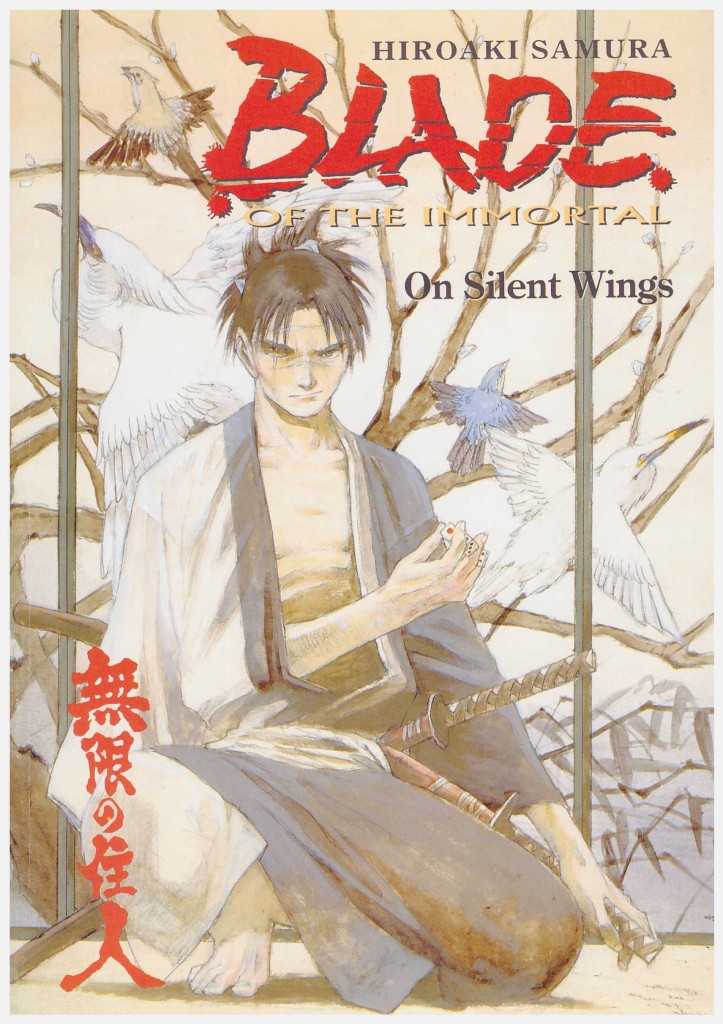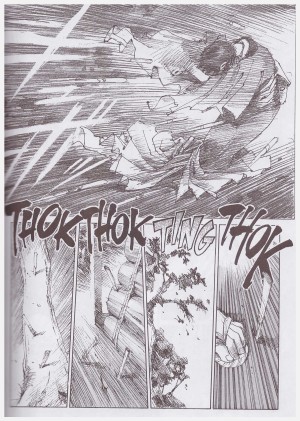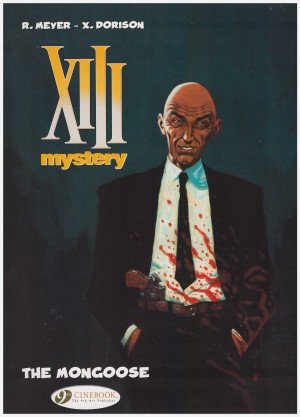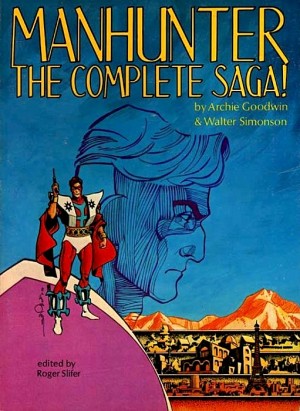Review by Frank Plowright
Hiroaki Samura begins this book with one of the brief pauses with which he peppers Blade of the Immortal. This, though, is rather a stunner. Immediately after a training session highlighting her shortcomings when it comes to combat, Rin wanders through the woods only to discover she’s not alone in the area. It’s an extremely tense sequence, cutting to the core of the matters dealt with throughout the series. Rin has been established as a regular, but is she indispensable? We don’t yet know that, so this opening sequence is a bravura interlude.
As was the case in Dreamsong, On Silent Wings also sheds new light on Anotsu Kagahisa, leader of the Itto-Ryu swordsmen and on whose orders Rin’s parents were murdered. He was previously portrayed as utterly ruthless, and while few of us would act in his manner to achieve his goals, we’re now provided with further insight into his motivation. There’s also a point where the expectation would be that he would deal with a situation in a certain manner, and Samura confounds this in credible fashion.
Samura might play fast and loose with the weaponry used in the course of Blade of the Immortal, dramatising for greater visual effect, but he’s accurate with history, and in justifying his ethics Anotsu places his recent past in a historical context. It’s a superb piece of writing.
The title story occupies the remainder of the book, and segues into On Silent Wings II. It’s set during and after a festival and Rin is the focus, mulling over what she now wants from life, and applying some lessons she’s learned since the series began.
This is a very ruminative book, featuring almost no action, and Manji is sidelined for much of the narrative, although has his moments. This provides On Silent Wings with a tone at odds with much of Blade of the Immortal, but in concentrating on philosophical issues it’s also far more indicative of the series as a whole. This fourth volume is very much a make or break book. There will be those who’ve reached this far and become frustrated that it’s not Lone Wolf and Cub, which can have been the expectation from the opening Blood of a Thousand. Those who go with the flow and continue, though, will be amply rewarded when it comes to both action and thought-provoking discussion.
It should also be noted that Blade of the Immortal was originally serialised in chapters of varying length in a giant-sized Japanese pulp publication. Unfettered by a limited page count, Samura tailors his episodes to the plot he has in mind. In the more formal world of graphic novels, this leads to some pagination problems. On Silent Wings is among the slimmest books of the series, yet pairing it with part two would create one of the thickest. There is however, no varying of price according to page count. Dark Horse would probably explain this as swings and roundabouts syndrome, and that seems credible. Blade of the Immortal is of such high quality throughout, that minor page count variations should be of little concern.





